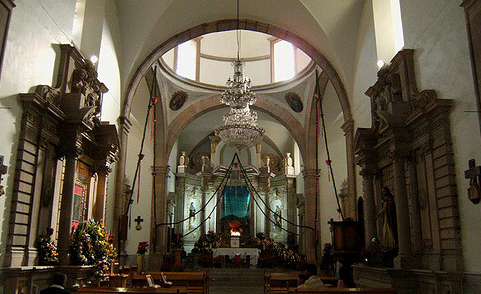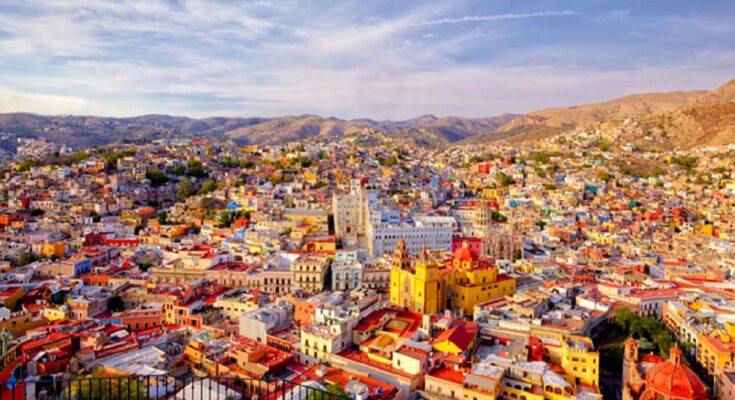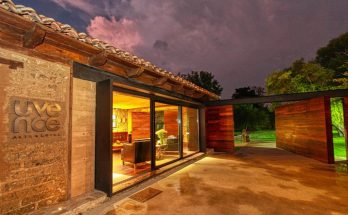Celaya is known as the “Golden Door to the Bajio”, due to its industrial, agricultural and commercial boom. The name Zalaya is Basque in origin and means “Flat Ground”.
Celaya Mexico
On October 12th, 1570, Celaya became the first Villa (small town) in the “Bajio” (Lowlands), and was known as the “Town, of Our Lady of the immaculate Conception of Zalaya”. Later, in 1658, it was given the title “Very Noble and Loyal City” by King Philip IV. Not long after, due to its vast agricultural production, it began to supply the state mining centers.

The years following the Mexican Revolution were difficult for Celaya, however, during the 40’s, the city enjoyed a resurgence with a growth in population, urbanization and industrial development. Its tourist appeal, due to the great number of works by famed Celaya architect Francisco Eduardo Tresguerras, coupled with its excellent location and easy access by double lane highway, has made Celaya one of the most important cities in the state.
Celaya is also famous for its “Cajeta” (caramel sweets), which comes in a variety of flavors y tienes que conocer este increíble lugar de México.
Celaya Attractions
Templo del Carmen (Church of Carmen)
This neoclassic style church was built between 1802 and 1807 and was designed by architect Francisco Eduardo Tresguerras. The interior of the church houses one of Tresguerras own paintings.

Convento San Francisco (San Francisco Convent)
One of the largest and most beautiful convents in the country, the facade is plateresque in style, while the interior is baroque and dates back to the 17th century.
Templo de San Francisco (San Francisco Church)
Construction of this church began in 1683, however, the neoclassic facade and altars were not completed until 1820 by architect Tresguerras.
Claustro Agustino (Agustino Cloister)
This quarry stone Building dates back to the 17th century and was used as the town jail until 1961. Today it is the “Casa de la Cultura” (House of Culture).
Templo de San Agustin (San Agustin Church)
This church was built in 1609 and is plateresque in design with Moorish influences.
Templo de la Tercera Orden (Church of the Third Order)
Built in 1820 by architect Tresguerras, this neoclassic style church contains a number of spectacular altars.

Columna de la Independencia (independence Column)
Another of Tresguerras works, this was the first monument erected to “A Free and Sovereign Mexico”.
Torre Hidraulica (Water Tower)
Also known as the “Bola de Agua” (Water Bail), the water tower has become the symbol of Celaya, it was built to commemorate the 100th year anniversary of Independence.
Casa del Diezmo (House of Tithe)
This building dates back to the 17th century and currently houses the regional tourism offices.
Presidencia Municipal (City Hall)
A number of murals by Celaya artist Octavio Ocampo are on display here and depict Mexican historical events.
Mausoleo de Tresquerras (Tresguerras Mausoleum)
This beautiful baroque style mausoleum contains the remains of famed architect Francisco Eduardo Tresguerras.
Plaza de Armas (Arms Square)
This peaceful square is characterized by majestic archways.
Museo de Momias (Mummy Museum)
There are 22 mummified bodies on display here. Visitors can learn about the mummification process as well as tour the tombs of the cemetery. Located in the “Panteon Antiguo de Celaya” (Old Celaya Cemetery).

Celaya Celebrations and Festival
Fiesta de Tierras Negras (Black Earth Festival)
This traditional festival is held from January 12 – 20 and honors the Virgin of Guadalupe. It is characterized by dance performances and traditional food, such as “gorditas”.
Semana Santa (Holy Week)
This celebration is held in March or April and is characterized with Passion Plays and a silent procession through the city streets.
Feria del Arbol y de la Flor (Tree and Flower Fair)
This Fair is hosted by the Business Women’s Club of Celaya and is held from May 5 – 15. A number of local and regional nurseries participate in the exposition.
Muestra Artesanal Celaya (Celaya Handicraft Expo): Held every May and October in the “Plaza Principal” (Main Square), this exhibit highlights the creativity and ingenuity of many local artists.
Virgen del Carmen (Virgin of Carmen)
Held in July, these festivities honor the Virgin of Carmen and offer traditional foods and fair games.Dia de Muertos (Day of the Dead): Celebrated on November 2. Traditional sugar figurines are sold and on the Sunday bonfires are lit along the streets surrounding the cemetery.
Festividades de la Virgen de la Purisima Concepcion (Festivities of the Virgin of the immaculate Conception)
This festival is held on December 8 and is in honor of the Patroness Virgin of Celaya. There are a number of religious festivities, procession of the Virgin, traditional food and fair games.
Feria de Navidad (Christmas Fair)
This fair exhibits a number of industrial, commercial and handicraft displays and is held the second half of December. Cultural and artistic events as well as fair games and Christmas parade floats add to the joyous atmosphere.
Conclusion
Celaya is a very beautiful city full of many cultural attractions in Mexico, attractions that will undoubtedly please, surprise and captivate you. Are you ready to get to know it?




